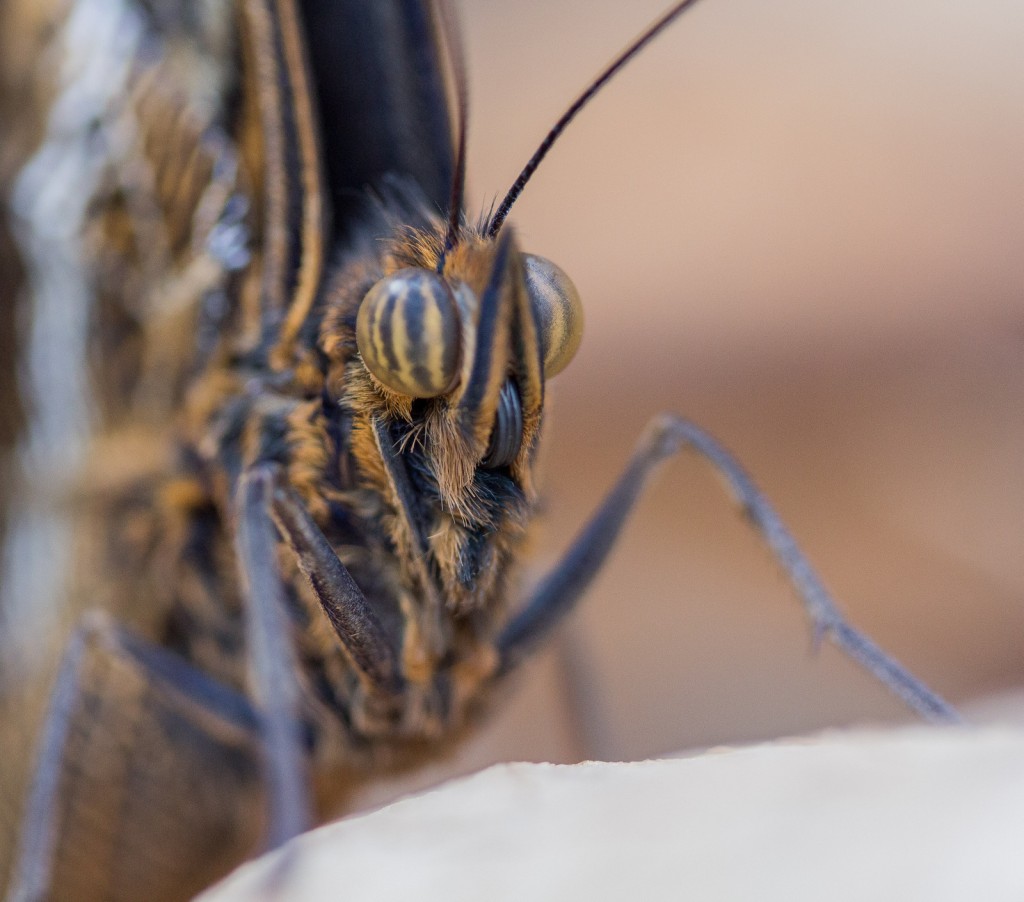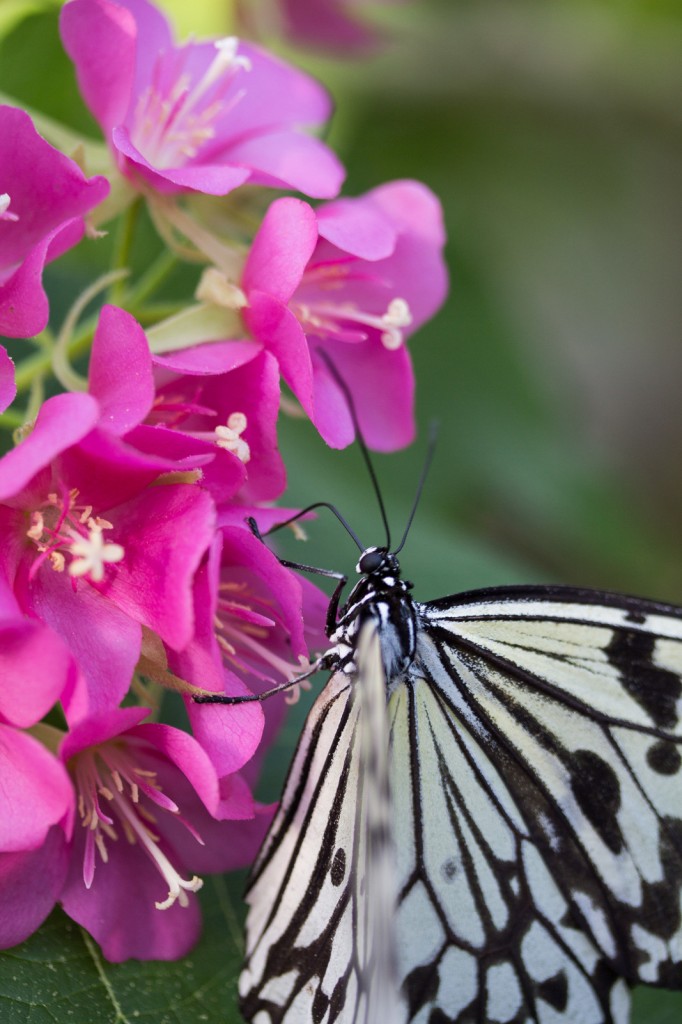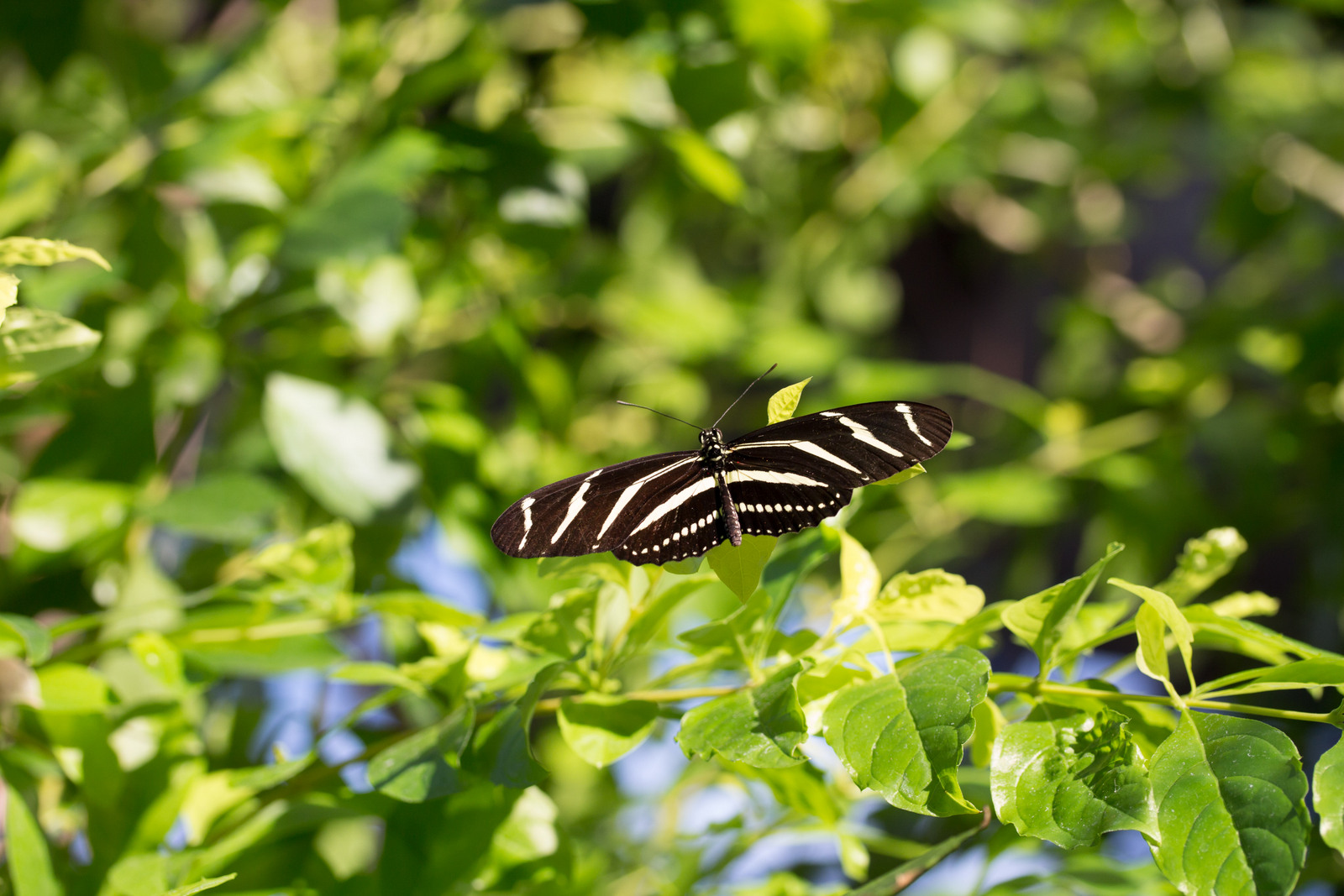About Butterflies
Last week I went to the St. Louis Science Center to view the IMAX movie "Flight of the Butterflies." I learned many of the details of the 2,000 mile migration of monarch butterflies. It was a superb story, beautifully filmed. Today, I went to the "Insectarium" at the St. Louis Zoo seeking to mingle with butterflies and take some macro photos. The butterflies were quite trusting, allowing me to often get within a few inches of them. These are amazing animals, stunningly beautiful.

 [More photos]
[More photos]

